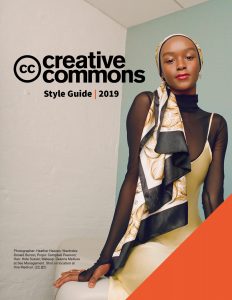Reproductions of Public Domain Works Should Remain in the Public Domain
mercredi 20 novembre 2019 à 20:34It has come to the attention of Creative Commons that there is an increased use of CC licenses by cultural heritage institutions on photographic reproductions and 3D scans of objects such as sculptures, busts, engravings, and inscriptions, among others, that are indisputably in the public domain worldwide. A recent example is the 3000-year-old Nefertiti bust on display at the Neues Museum in Berlin that the museum licensed under BY-NC-SA. The practices vary widely, from using a CC BY license, to using our most restrictive license—CC BY-NC-ND.
Most of these objects have been in the public domain for a long time now, indeed many that have never been subject to copyright. The copyright holder is the only person that can apply a CC license to a work. If the work is in the public domain, no copyright licenses should be applied, and in the case of CC licenses, which are designed to only operate where copyright exists, the application of a CC license is ineffective. In these cases, if anything, the Public Domain Mark or the CC0 public domain dedication tool should be applied to confirm worldwide public domain status.
If the work is in the public domain, no copyright licenses should be applied, and in the case of CC licenses, which are designed to only operate where copyright exists, the application of a CC license is ineffective.
Some of these claims are being made over the 3D scans and photographic reproductions of objects, not necessarily over the objects themselves. However, digitization by itself doesn’t create copyright or similar rights because in the vast majority of jurisdictions there is no originality involved in making a faithful digital reproduction of a creative work. In most of the cases, these reproductions follow very well-established industry standards for preservation purposes. Even when these scans are the result of skilled labor, these reproductions are still insufficiently creative to be granted copyright protection almost everywhere.
In some of these cases, the application of CC licenses has been applied over contested objects, where cultural stewardship and ownership of these objects is the subject of legal, political, and diplomatic discussions. Creative Commons is exploring this issue and recognizes that CC licenses do not sufficiently address these issues. However, in these cases, it is particularly meaningful to pay attention to the cultural prerogatives that enure to the communities of origin, including decisions on digitization and access restrictions and conditions.1
Creative Commons licenses are tools to allow users to better understand what permissions are being granted to the public by the creator of the original work. When a CC license is misapplied, the ability of CC licenses to be a standard signal for communicating copyright permissions is undermined. Mislabelling works creates confusion among re-users of works and limits the rights of the public to benefit from the global commons.
We acknowledge that in some cases cultural heritage institutions use CC licenses in order to get credit for their work or to indicate the provenance of the digital surrogates. There are better, more appropriate technical tools to achieve that goal, including metadata and machine readability standards.
Lastly, we understand the concerns over revenue and profit that some cultural heritage institutions express when evaluating open access policies. However, claiming copyright over public domain works and successful revenue strategies are different conversations that don’t belong in the same space. If anything, there is a growing amount of evidence that shows that the associated costs for licensing images dwarf the potential benefits or revenue streams for licensing images.2
Creative Commons licenses are not tools that should be used to limit the possibility of discovery, sharing, and re-use of the public domain. Cultural heritage institutions should embrace open access policies as part of their institutional missions to grant access to culture and information to the public.
Creative Commons is making efforts to offer more training and education activities to cultural heritage institutions on open access. We are also working in partnership with the Wikimedia Foundation on a Declaration on Open Access for Cultural Heritage, that we expect to launch at our Global Summit in May 2020. Engage with us in this conversation at @openglam.
References
1. Pavis, Mathilde and Wallace, Andrea, Response to the 2018 Sarr-Savoy Report: Statement on Intellectual Property Rights and Open Access Relevant to the Digitization and Restitution of African Cultural Heritage and Associated Materials (March 25, 2019). Available at SSRN: https://ssrn.com/abstract=3378200 or http://dx.doi.org/10.2139/ssrn.3378200
2. Crews, Kenneth D., Museum Policies and Art Images: Conflicting Objectives and Copyright Overreaching. Fordham Intellectual Property, Media & Entertainment Law Journal, Vol. 22, p. 795, 2012; Tanner S. Reproduction charging models & rights policy for digital images in American art museums: A Mellon Foundation funded study. Online: King’s College London, 2004. 57 p.; Foteini Valeonti, Andrew Hudson-Smith, Melissa Terras & Chrysanthi Zarkali, Reaping the Benefits of Digitisation: Pilot study exploring revenue generation from digitised collections through technological innovation, Proceedings of EVA London 2018, UK.
The post Reproductions of Public Domain Works Should Remain in the Public Domain appeared first on Creative Commons.


